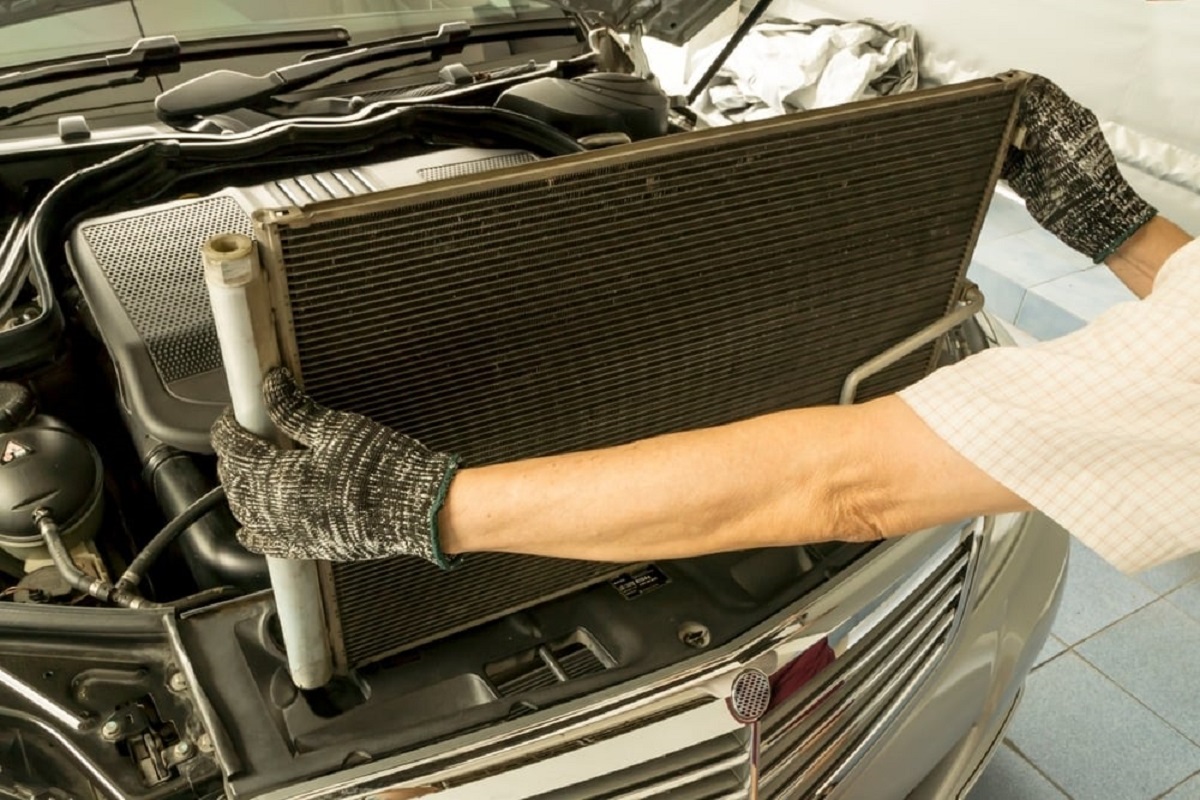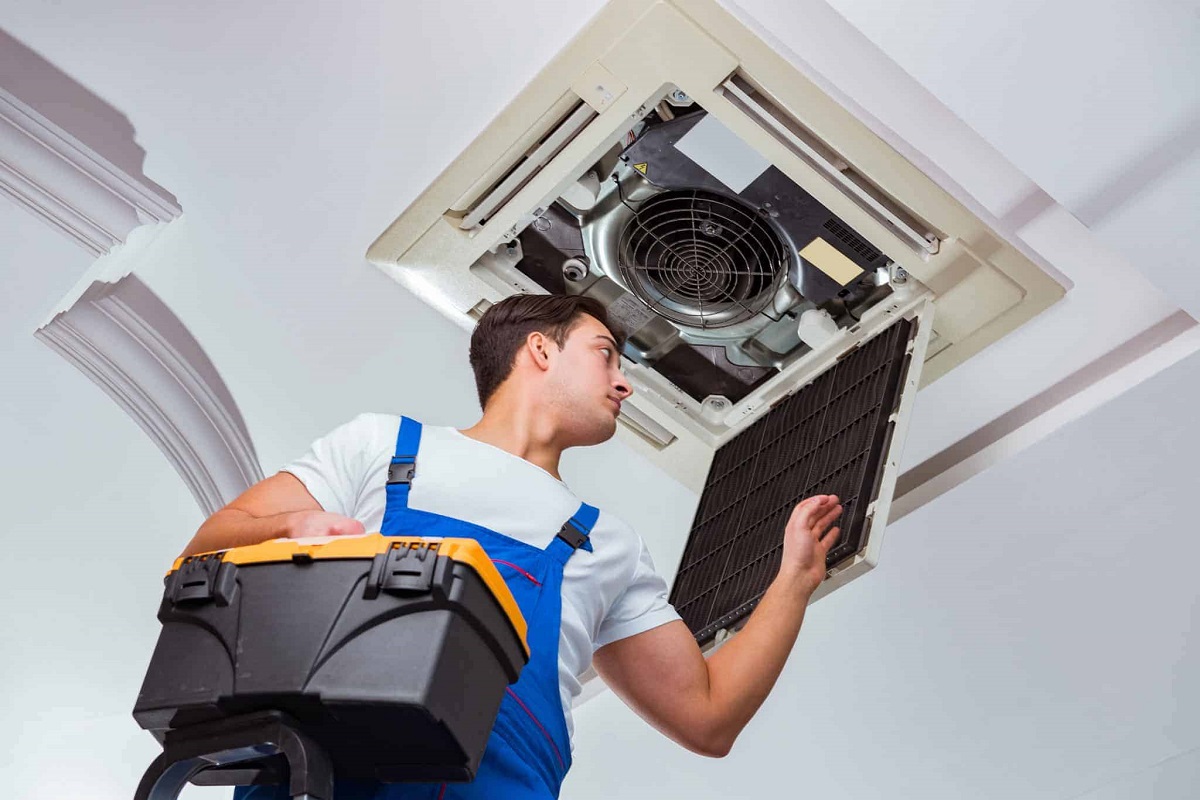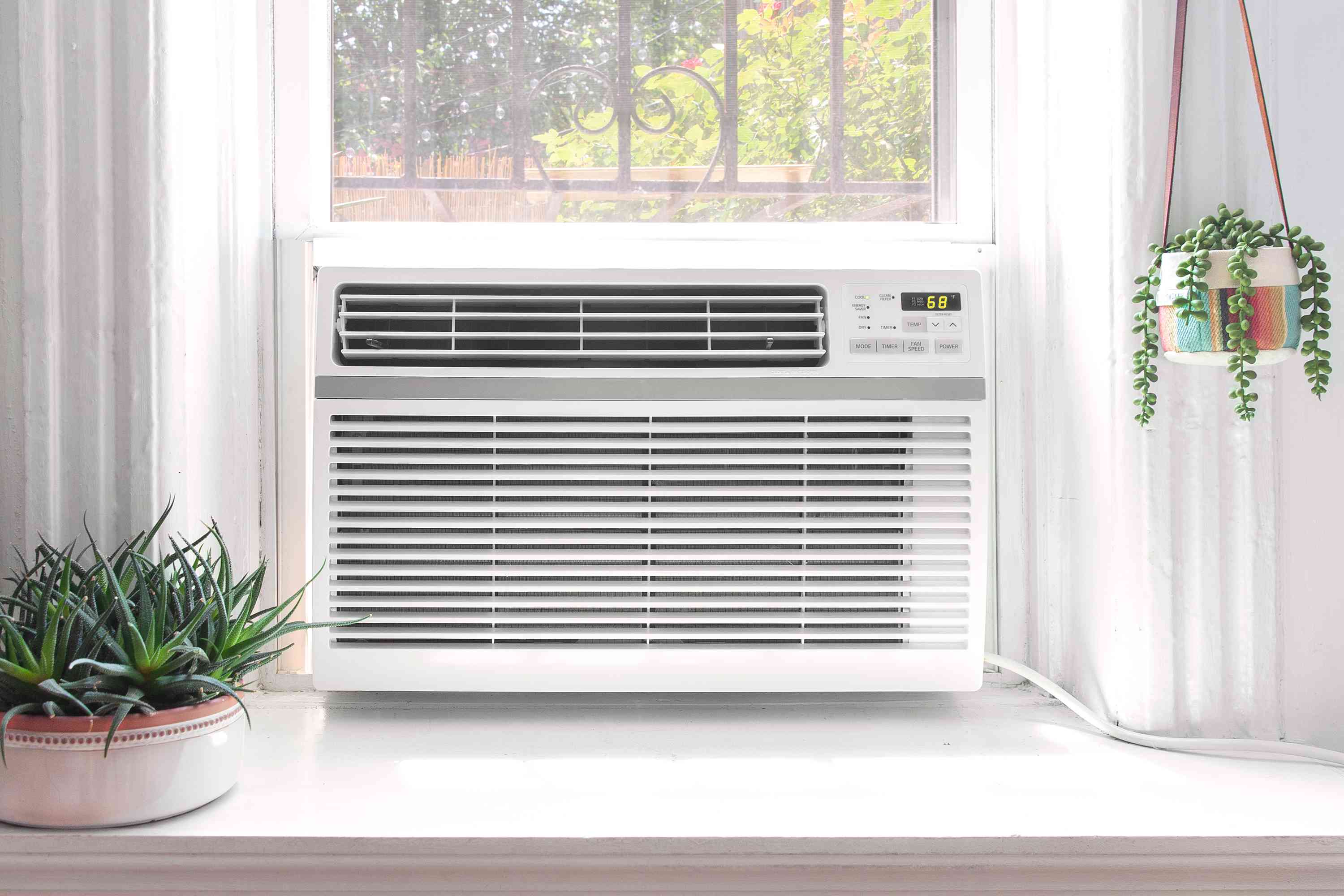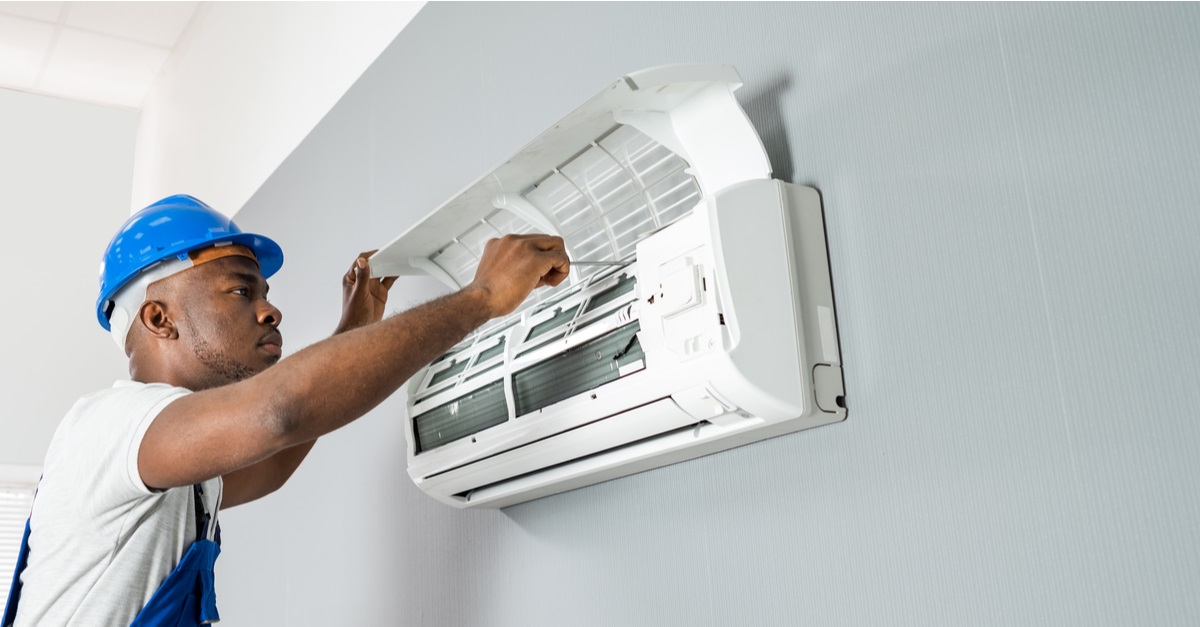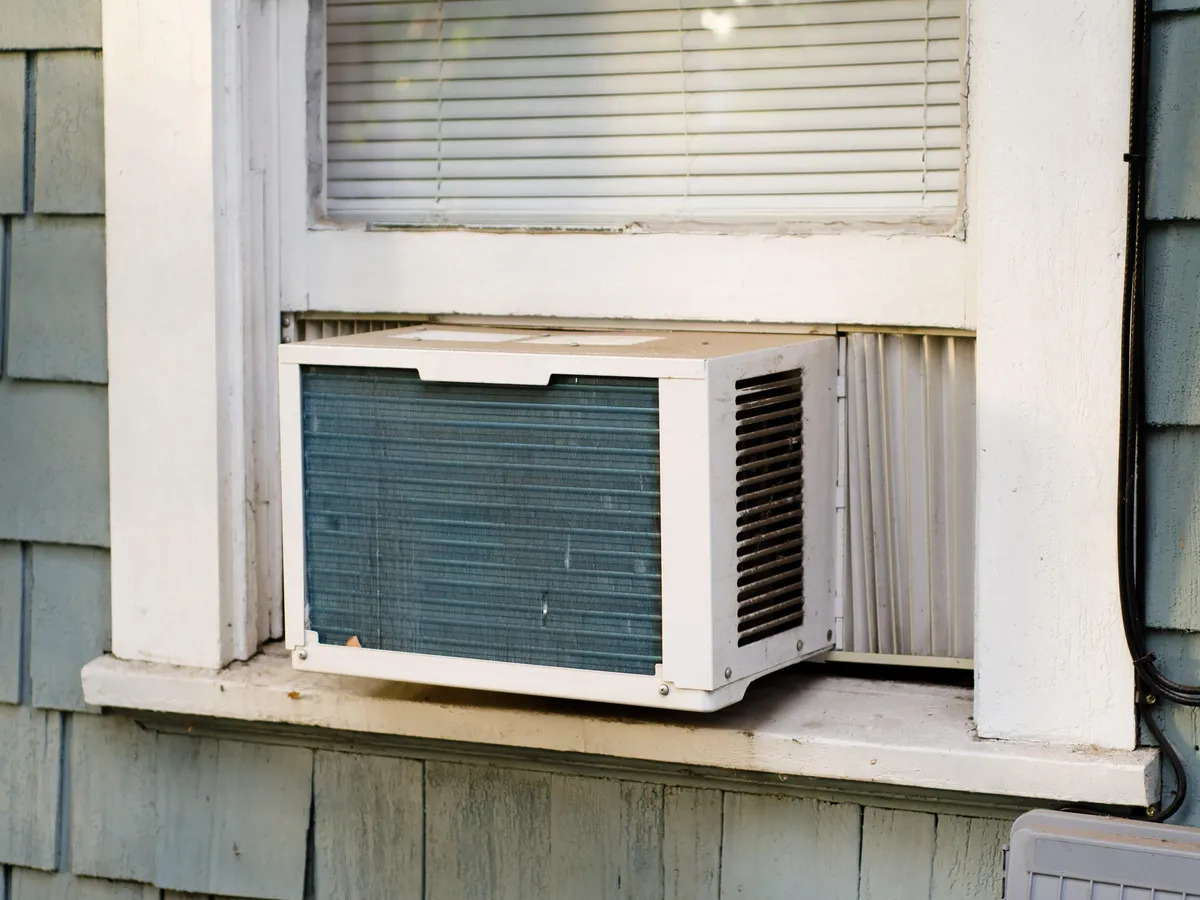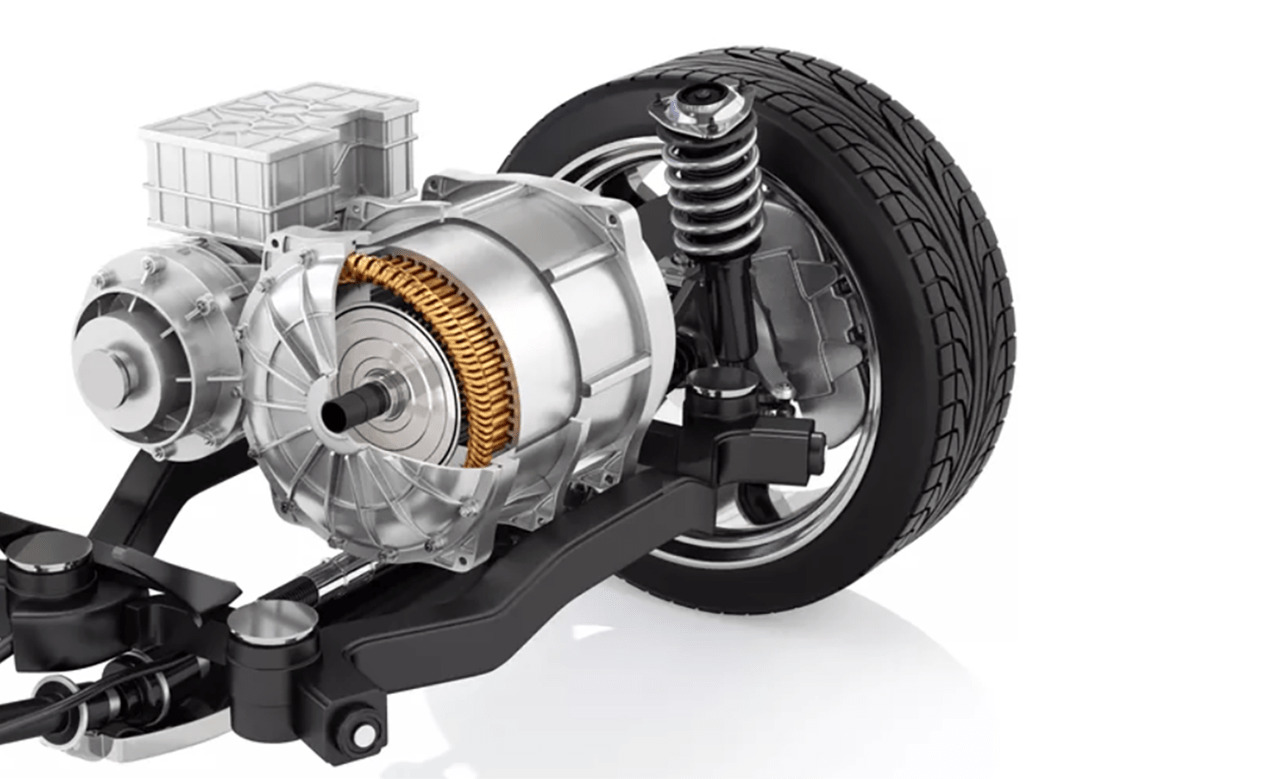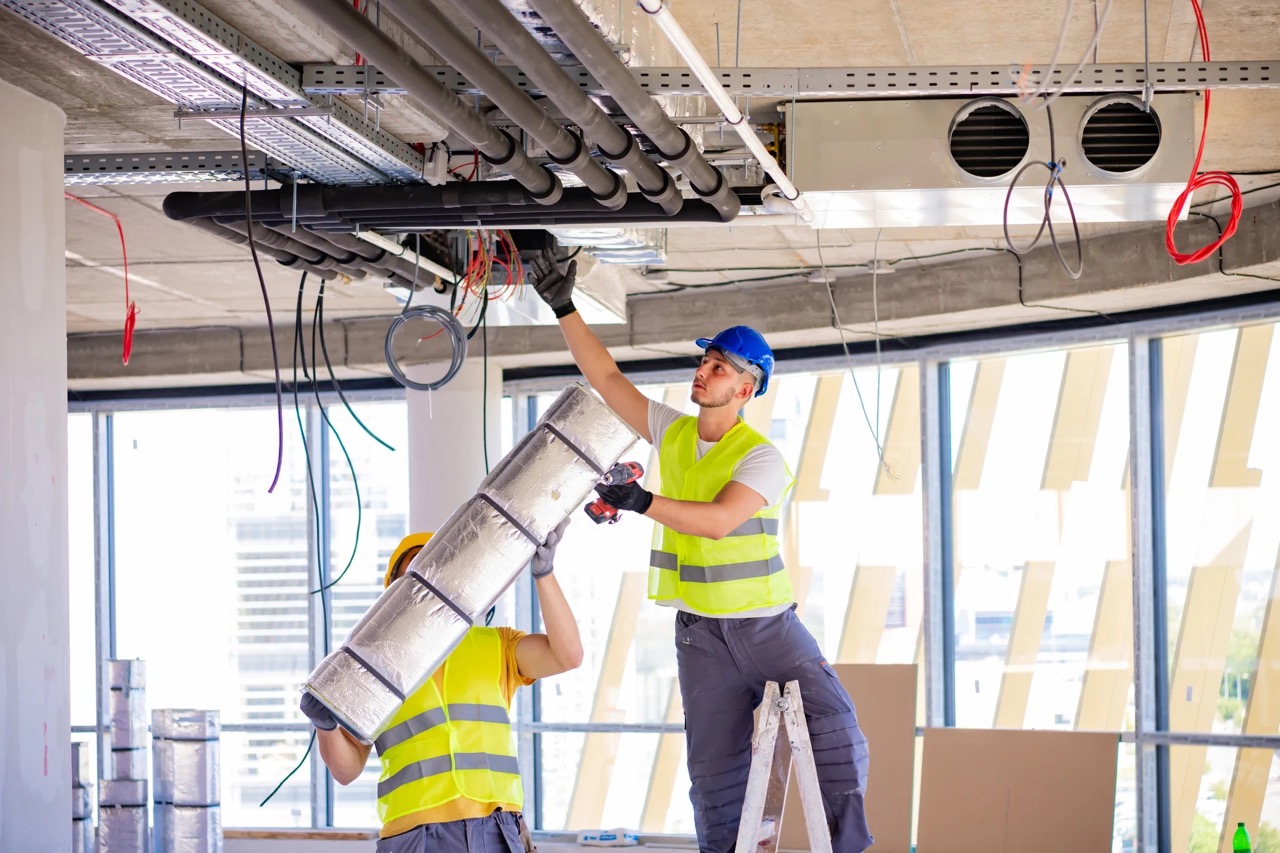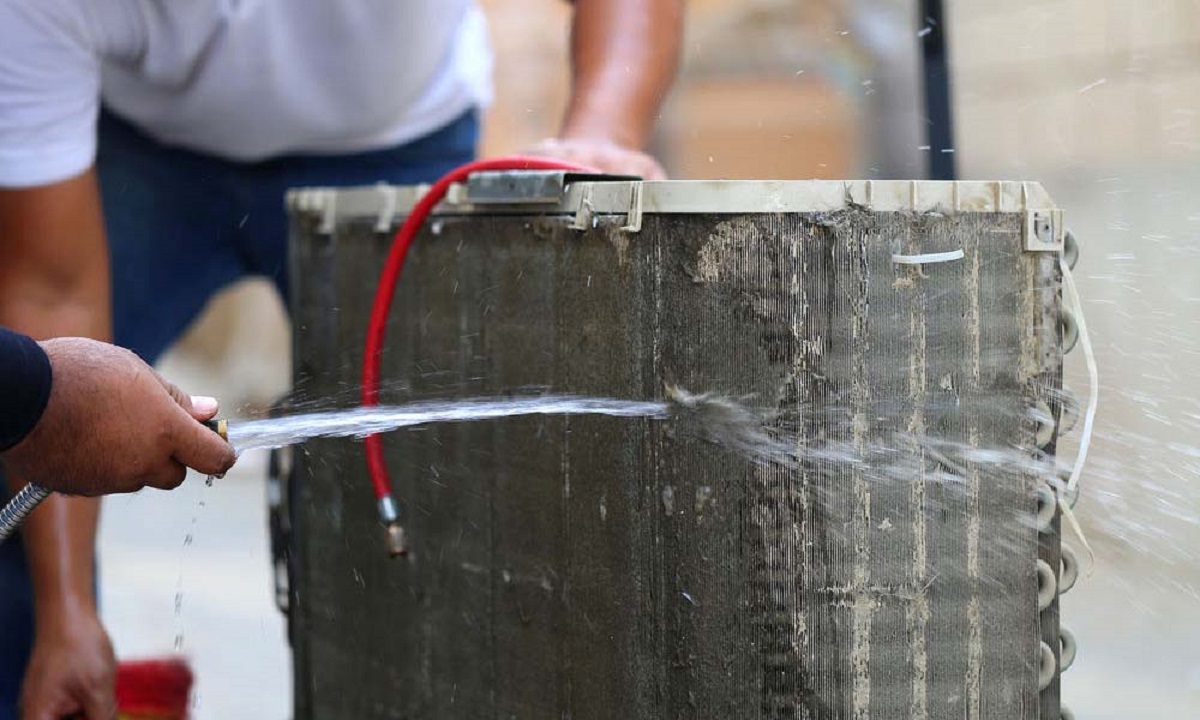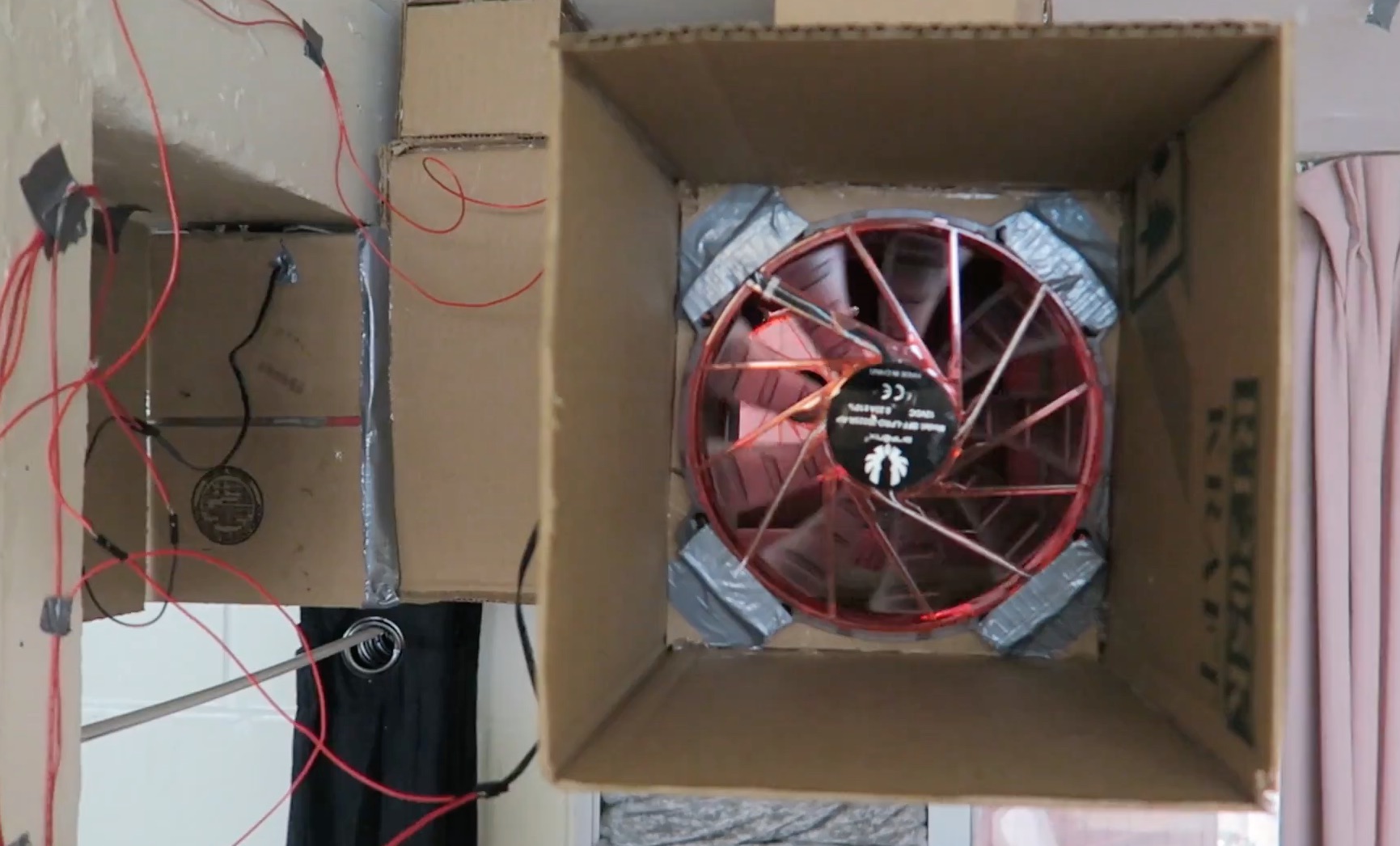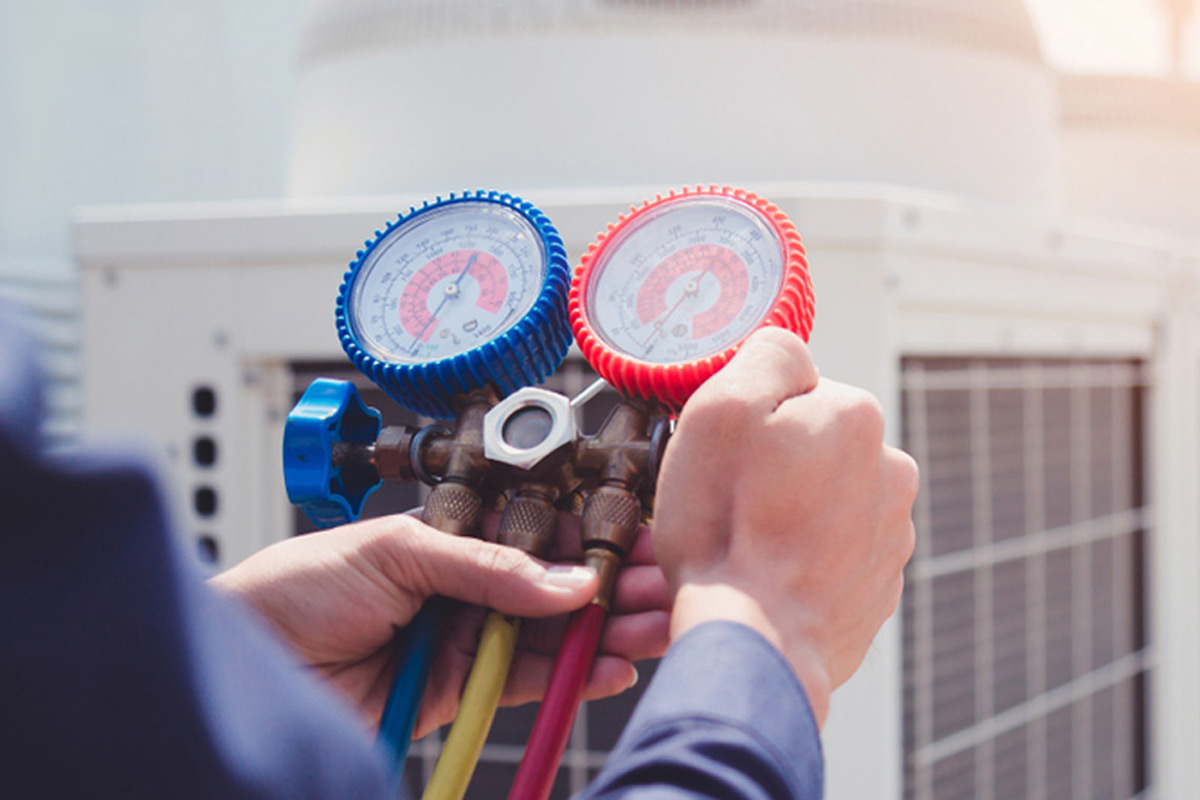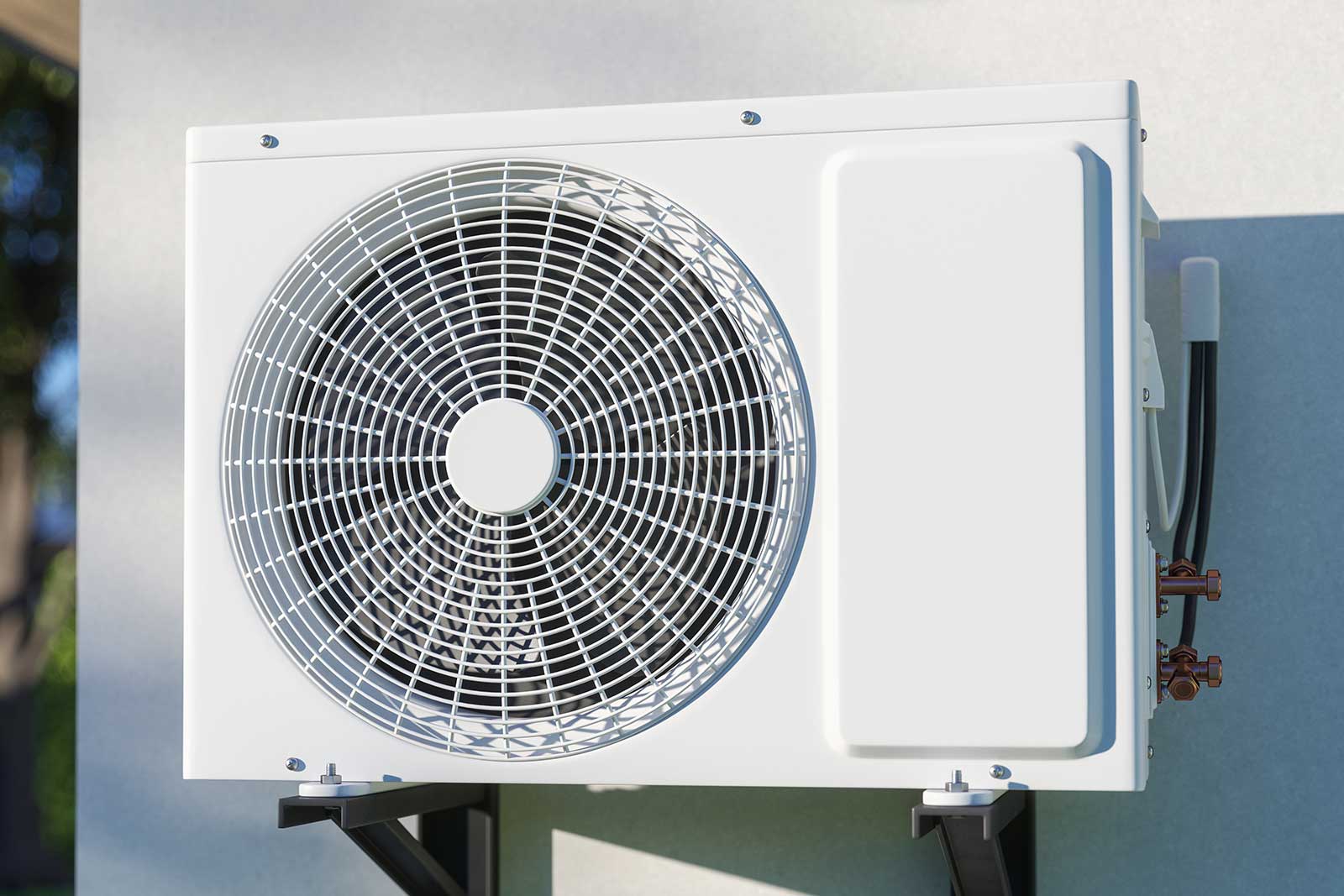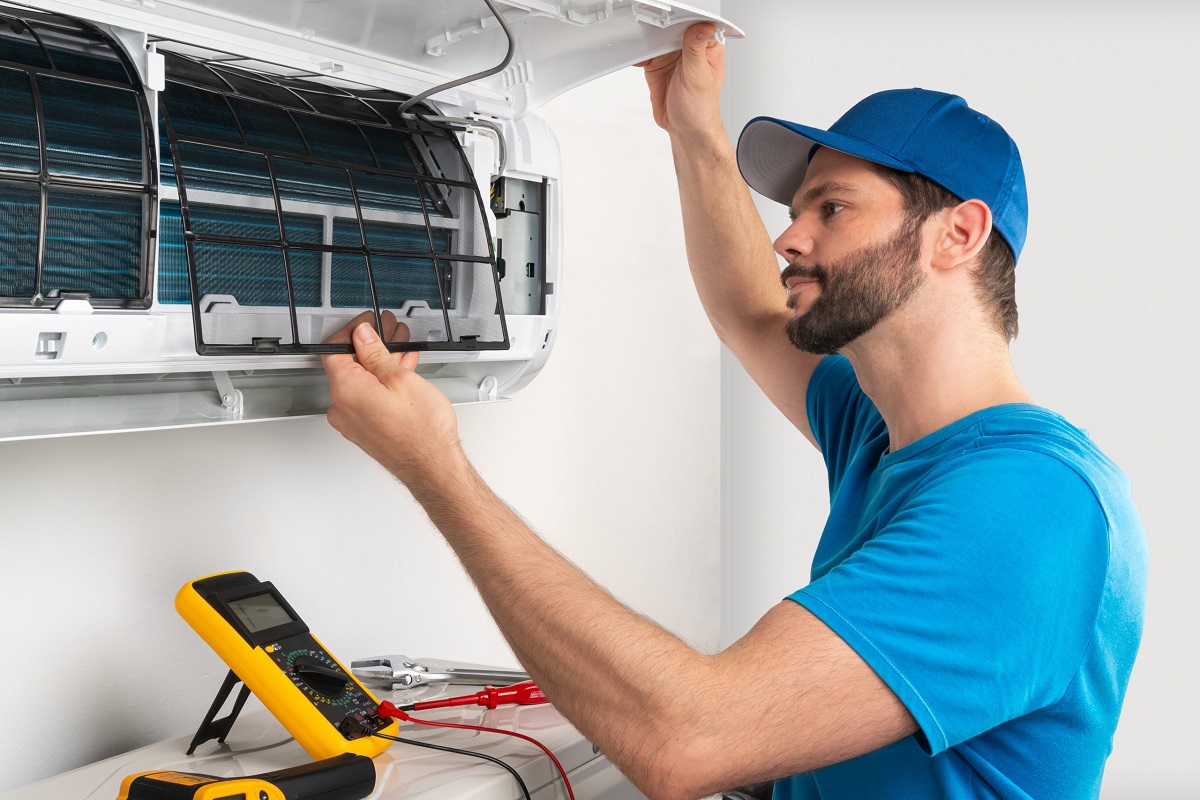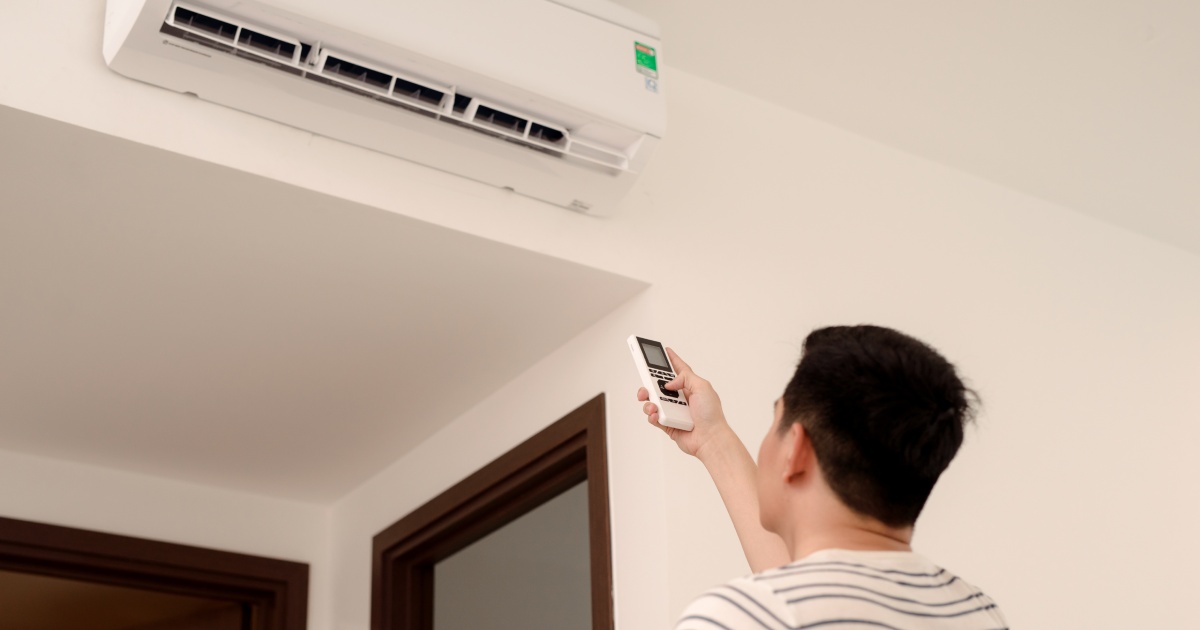Home>Home Maintenance>AC Maintenance: What Do They Do?
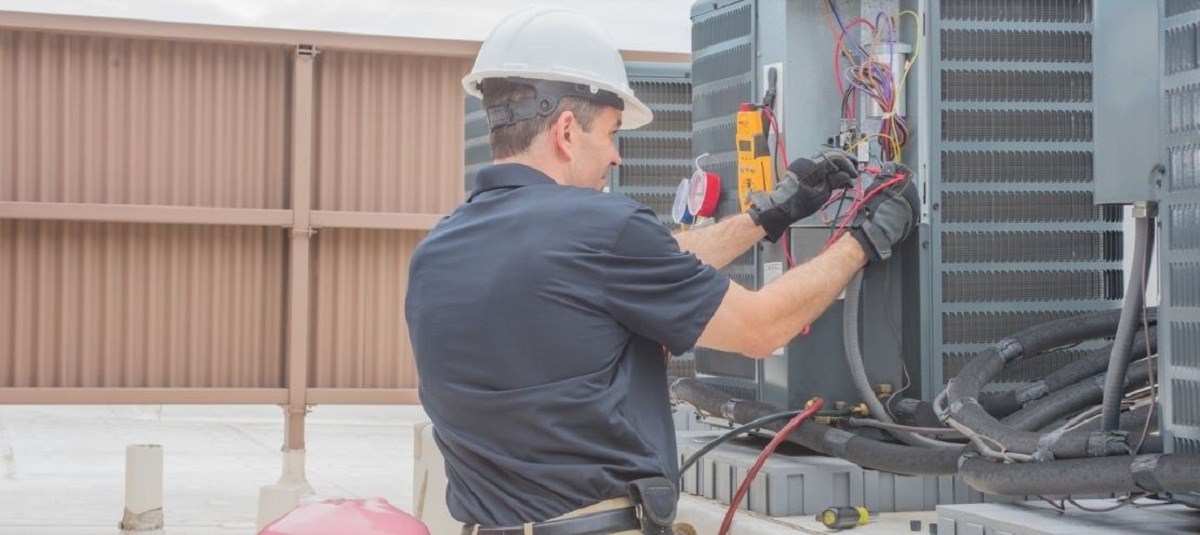

Home Maintenance
AC Maintenance: What Do They Do?
Modified: March 6, 2024
Discover the importance of AC maintenance and how it contributes to home maintenance. Learn about the essential tasks performed during AC maintenance to keep your home cool and comfortable.
(Many of the links in this article redirect to a specific reviewed product. Your purchase of these products through affiliate links helps to generate commission for Storables.com, at no extra cost. Learn more)
Introduction
Welcome to the world of AC maintenance! As the temperature rises and the sweltering heat of summer approaches, it becomes essential to ensure that your air conditioning system is in top-notch condition. Regular AC maintenance is the key to keeping your system running efficiently, prolonging its lifespan, and enjoying optimal comfort in your home.
In this article, we will delve into the important aspects of AC maintenance. From cleaning and inspecting air filters to checking refrigerant levels, we will cover all the necessary tasks that HVAC technicians perform to keep your air conditioning system in peak condition. So, let’s dive in and explore the world of AC maintenance together!
Key Takeaways:
- Regular AC maintenance, including tasks like cleaning filters and checking refrigerant levels, keeps your system running efficiently, saves energy, and extends its lifespan. It’s like giving your AC a yearly check-up to keep it healthy and working well.
- Professional AC maintenance is crucial for safety and effectiveness. Trained technicians can identify and fix potential issues, ensuring your system operates smoothly, saves energy, and provides a comfortable home environment.
Read more: What To Do If Your AC Freezes
Overview of AC Maintenance
AC maintenance is a comprehensive process that involves a series of tasks designed to keep your air conditioning system functioning optimally. By performing regular maintenance, you can prevent breakdowns, improve energy efficiency, and extend the lifespan of your unit. It is recommended to have professional AC maintenance performed at least once a year.
During an AC maintenance service, a trained technician will thoroughly inspect and clean various components of your air conditioning system. These tasks include:
- Cleaning and inspecting air filters
- Checking and cleaning coils
- Inspecting and lubricating motors and fans
- Clearing and cleaning drain lines and pans
- Testing and calibrating thermostats
- Checking and adjusting refrigerant levels
- Inspecting electrical connections and components
- Evaluating overall system performance
By addressing these areas during maintenance, any potential issues can be identified and resolved before they escalate into major problems. Let’s take a closer look at each of these AC maintenance tasks.
Cleaning and Inspecting Air Filters
One of the crucial tasks of AC maintenance is cleaning and inspecting the air filters. Air filters play a vital role in trapping dust, dirt, pollen, and other allergens, preventing them from circulating in your home. Over time, these filters can become clogged and dirty, obstructing airflow and reducing the efficiency of your air conditioning system.
During a maintenance service, the technician will first inspect the air filters to assess their condition. If the filters are dirty or damaged, they will be replaced with new ones. If the filters are still in good condition, they will be thoroughly cleaned using compressed air or gentle cleaning solutions. Cleaning the air filters helps to improve indoor air quality and ensures proper airflow throughout your home.
Regularly cleaning or replacing air filters not only helps to maintain a healthy living environment but also improves the efficiency of your AC system. When the airflow is unobstructed, your air conditioner doesn’t have to work as hard to cool your home, resulting in energy savings and a longer lifespan for your unit.
Checking and Cleaning Coils
Another important task as part of AC maintenance is checking and cleaning the coils. Your air conditioning system consists of two types of coils: the evaporator coil and the condenser coil.
The evaporator coil is located inside your home and is responsible for absorbing heat from the air. Over time, the evaporator coil can accumulate dust, dirt, and even mold, which can hinder its ability to absorb heat effectively. During maintenance, the technician will carefully inspect the evaporator coil, clean it if necessary, and remove any debris or obstructions that may impede its performance.
The condenser coil, on the other hand, is located in the outdoor unit of your air conditioner. Its purpose is to release the heat absorbed by the evaporator coil. Similar to the evaporator coil, the condenser coil can also accumulate dirt and debris, which can hinder its ability to release heat efficiently. The technician will clean the condenser coil, ensuring maximum heat transfer and proper functioning of your AC system.
By regularly checking and cleaning the coils, you can ensure that your air conditioning system runs efficiently, provides optimal cooling performance, and helps to maintain better indoor air quality. It’s important to note that cleaning the coils requires specialized tools and knowledge, which is why it’s best left to professional HVAC technicians during routine maintenance visits.
Inspecting and Lubricating Motors and Fans
The motors and fans are crucial components of your air conditioning system that help in circulating cool air throughout your home. During AC maintenance, it is essential to inspect and lubricate these components to ensure smooth operation and prevent any potential issues.
The technician will carefully inspect the motors and fans for any signs of wear and tear, such as loose or damaged belts, worn-out bearings, or excessive noise. If any issues are detected, they will be addressed and resolved promptly to prevent further damage. Additionally, the technician will lubricate the moving parts of the motors and fans, ensuring they operate smoothly and efficiently.
Lubrication plays a vital role in reducing friction and heat build-up, which in turn helps to prolong the lifespan of the motors and fans. Proper lubrication also ensures that the system operates quietly and without any unnecessary strain on the components. Regular inspection and lubrication of motors and fans contribute to the overall performance and efficiency of your air conditioning system.
Keep in mind that attempting to lubricate motors and fans yourself can be risky and may cause more harm than good. It is always recommended to leave this task to the expertise of HVAC professionals who have the necessary knowledge and experience to carry out the maintenance safely and effectively.
Read more: How Many Btu AC Do I Need
Clearing and Cleaning Drain Lines and Pans
Clearing and cleaning the drain lines and pans is a crucial part of AC maintenance that is often overlooked. Your air conditioning system produces condensation as it cools the air, and this moisture needs to be properly drained to prevent issues such as water leaks and mold growth.
During maintenance, the technician will inspect the drain lines and pans to ensure they are clear of any clogs or obstructions. Over time, dirt, algae, and debris can accumulate in the drain lines, causing blockages and impeding the flow of water. If a clog is detected, the technician will clear it using specialized tools or cleaning solutions. Additionally, the drain pans, which collect the condensation, will be cleaned to remove any slime or buildup.
Regularly clearing and cleaning the drain lines and pans helps to prevent water leaks, which can cause damage to your home and the air conditioning system itself. It also helps to prevent the growth of mold and bacteria that thrive in damp environments. By ensuring proper drainage, you can maintain a healthier indoor environment and avoid potentially costly repairs.
If you notice any signs of water leakage or suspect a blockage in the drain lines, it is essential to address the issue promptly. Ignoring these problems can lead to damage to your home and a decrease in the efficiency and effectiveness of your air conditioning system. Professional AC maintenance will include a thorough inspection and cleaning of the drain lines and pans to ensure proper functioning.
Regularly changing the air filters in your AC unit is essential for maintaining its efficiency and preventing breakdowns. Aim to replace the filters every 1-3 months, depending on usage.
Testing and Calibrating Thermostats
The thermostat is the control center of your air conditioning system, allowing you to set the desired temperature and regulate the cooling process. During AC maintenance, it is crucial to test and calibrate the thermostats to ensure accurate temperature readings and optimal performance.
The technician will begin by testing the thermostat’s functionality, checking if it accurately responds to temperature adjustments and switches on and off at the desired temperature settings. If any issues are detected, such as inaccurate temperature readings or a malfunctioning thermostat, the technician will either repair or replace the thermostat as needed.
Calibrating the thermostat is an important step that ensures it accurately reflects the temperature in your home. Over time, thermostats can fall out of calibration due to various factors, including regular wear and tear or environmental factors. By recalibrating the thermostat, the technician will help ensure that it accurately controls your air conditioning system and maintains a comfortable indoor temperature.
Accurate calibration of thermostats is crucial as it ensures optimal energy efficiency. When the thermostat accurately detects the temperature, it allows the air conditioning system to operate at the required level, preventing unnecessary energy consumption and reducing utility bills. Additionally, proper calibration helps to avoid temperature fluctuations and maintains a comfortable environment in your home.
If you have a programmable thermostat, the technician may also check and update the programming settings during the maintenance visit. They can guide you on how to optimize the programming schedule for energy efficiency and comfort.
By testing and calibrating the thermostat, you can ensure that it operates accurately and efficiently, contributing to the overall performance and energy efficiency of your air conditioning system.
Checking and Adjusting Refrigerant Levels
Refrigerant is a crucial component of the air conditioning system that allows for the cooling process. It absorbs heat from the indoor air and releases it outside, creating a comfortable and cool environment inside your home. During AC maintenance, it is important to check and adjust the refrigerant levels to ensure optimal system performance.
The technician will start by inspecting the refrigerant lines and connections for any signs of leaks. Leaks can cause a decrease in refrigerant levels, leading to a decrease in cooling efficiency and potentially damaging the compressor. If any leaks are detected, they will be repaired before proceeding further.
Next, the technician will check the refrigerant levels using specialized gauges and equipment. In an ideal scenario, the AC system should have the manufacturer-recommended amount of refrigerant. If the levels are found to be low, the technician will add refrigerant to bring it back to the correct level.
Proper refrigerant levels are crucial for efficient cooling. Insufficient refrigerant can result in reduced cooling capacity and increased energy consumption. On the other hand, overcharged refrigerant can lead to system inefficiency and compressor damage. Therefore, it is important to ensure the refrigerant levels are within the optimal range for the best performance and energy efficiency of your air conditioning system.
It’s worth noting that refrigerant adjustments should only be done by trained and certified HVAC technicians. They have the expertise to handle refrigerants safely and follow the regulations and guidelines set by environmental agencies.
By checking and adjusting the refrigerant levels, you can ensure that your air conditioning system operates efficiently, provides effective cooling, and helps to maintain a comfortable environment in your home.
Inspecting Electrical Connections and Components
As part of AC maintenance, it is crucial to inspect the electrical connections and components of your air conditioning system. Electrical issues can not only lead to system malfunctions but also pose safety hazards. Therefore, it is essential to ensure that all electrical connections are secure and components are in good working condition.
The technician will carefully inspect the electrical wiring, terminals, and connections throughout the system. They will check for any signs of wear and tear, loose connections, or damaged components. Loose or faulty electrical connections can cause system inefficiency, intermittent operation, or even electrical faults. If any issues are detected, the technician will repair or replace the faulty parts to restore proper functionality.
In addition to inspecting the connections, the technician will also examine other electrical components of the system, such as capacitors, relays, and circuit boards. These components play crucial roles in the operation of the air conditioning system. Any malfunctioning or worn-out electrical components will be identified and replaced to ensure reliable and safe operation.
Inspecting electrical connections and components helps to prevent potential electrical hazards and ensures the smooth functioning of your air conditioning system. It also contributes to the overall efficiency and performance of the system, as well as enhances its longevity.
It is important to note that working with electricity can be dangerous, and only trained professionals should handle electrical inspections and repairs. Attempting to inspect or repair electrical components without proper knowledge and experience can lead to injuries or further damage. Therefore, always rely on qualified HVAC technicians for the inspection of electrical connections and components.
Read more: What Does The AC Button Do In A Car
Evaluating Overall System Performance
The final step in AC maintenance is evaluating the overall performance of your air conditioning system. This step involves conducting various tests and assessments to ensure that the system is operating at its optimal level of efficiency and effectiveness.
The technician will perform a series of tests to evaluate key performance indicators such as temperature output, airflow, and system cycling. They will assess whether the system is cooling the air to the desired temperature, maintaining consistent airflow throughout your home, and cycling on and off as needed.
If any issues or inconsistencies are identified during the evaluation, the technician will investigate further to determine the root cause and address it accordingly. This may involve adjusting settings, fine-tuning components, or recommending additional repairs or upgrades to optimize system performance.
During the evaluation, the technician may also measure and analyze energy consumption to identify any potential energy efficiency improvements. They can provide recommendations on how to enhance energy efficiency, such as upgrading to a programmable thermostat or installing a zoning system.
By evaluating the overall system performance, you can ensure that your air conditioning system is functioning optimally, providing reliable cooling, and operating efficiently. Identifying any performance issues early on allows for timely repairs or adjustments, preventing further damage and improving the overall lifespan of your system.
Periodic evaluations of your air conditioning system’s performance are essential in maintaining its efficiency and performance. It is recommended to schedule professional AC maintenance on an annual basis to ensure that your system continues to operate at its best, keeping you comfortable throughout the year.
Conclusion
AC maintenance is a critical aspect of home maintenance that ensures the optimal performance, longevity, and energy efficiency of your air conditioning system. By following a comprehensive maintenance routine, you can avoid costly breakdowns, improve indoor air quality, and enjoy a comfortable living environment.
Throughout the AC maintenance process, trained technicians perform a series of tasks to keep your system in peak condition. These tasks include cleaning and inspecting air filters, checking and cleaning coils, inspecting and lubricating motors and fans, clearing and cleaning drain lines and pans, testing and calibrating thermostats, checking and adjusting refrigerant levels, inspecting electrical connections and components, and evaluating overall system performance.
Each of these maintenance tasks plays a crucial role in ensuring the smooth and efficient operation of your air conditioning system. From keeping the air filters clean to prevent obstructions, to checking refrigerant levels for optimal cooling performance, every step contributes to the overall maintenance and functionality of your system.
It is important to note that while some AC maintenance tasks can be done by homeowners, many require the expertise of professional HVAC technicians. Hiring a qualified technician ensures that the maintenance is thorough, safe, and effective. They have the knowledge and experience to identify potential issues, offer appropriate solutions, and ensure that your system functions at its best.
By investing in regular AC maintenance, you not only improve the performance and lifespan of your air conditioning system, but also reduce energy consumption and lower utility bills. Additionally, proper maintenance helps to enhance indoor air quality, providing a cleaner and healthier living environment for you and your family.
So, don’t neglect the importance of AC maintenance. Schedule an annual maintenance visit with a trusted HVAC professional to keep your air conditioning system running smoothly and enjoy uninterrupted comfort throughout the year.
Frequently Asked Questions about AC Maintenance: What Do They Do?
Was this page helpful?
At Storables.com, we guarantee accurate and reliable information. Our content, validated by Expert Board Contributors, is crafted following stringent Editorial Policies. We're committed to providing you with well-researched, expert-backed insights for all your informational needs.
